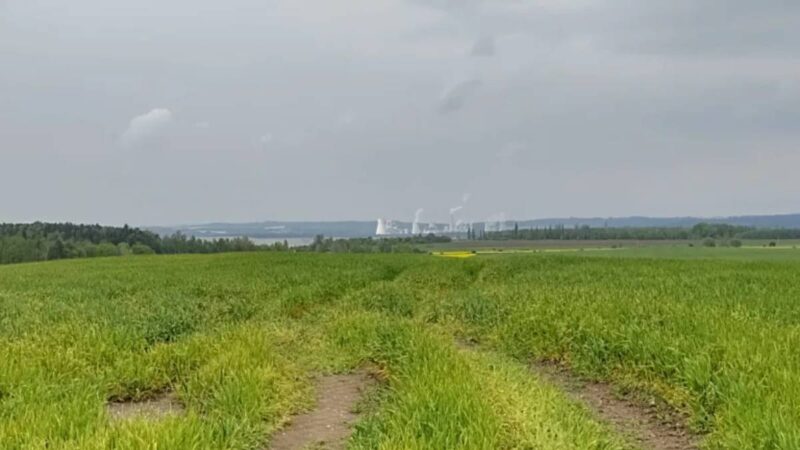
Read previous chapters of the story:
The controversial wall or barrier is supposed to be an important step in the fight against groundwater runoff around the mine. This in itself presents a problem. Activists from Uhelná, as well as some experts and environmentalists, have pointed out that the wall is built in the wrong place and doesn’t perform the function that politicians (and other experts) say it does: it doesn’t stop the flow of groundwater from around the mine, resulting in the continued loss of groundwater on the Czech side of the border. Milan Starec of Uhelná, for example, says it does not protect the local water source, to which the local water supply is connected, at all.
An analysis by Frank Bold Czech Republic summarized the problem as follows:
The water protection mechanisms enshrined in the agreement are based on outdated knowledge that was available at the time of the EIA process and relied on data on the impact of mining on Czech territory until 2015. Indeed, at that time, water flowed mainly through one underground layer (the so-called Middle Tertiary, referred to as Mw by the Polish side in the text of the agreement), where an underground barrier was then planned. In the meantime, however, runoff conditions changed and water from Czech territory began to flow mainly through another channel (the so-called Lower Tertiary, referred to by the Polish side as Pw).
In other words, according to the critics, the agreement enshrines water protection mechanisms based on an outdated hydrological model, which in effect means that “the underground barrier and the wells, which, according to the agreement, are supposed to monitor its functionality and be relevant for possible modifications to the barrier, are located only in the middle Tertiary.” As a result, the agreement does not protect drinking water sources in Uhelná and the wider area.
According to the agreement, the effects of the barrier were to be monitored on a pilot basis for one year, using four wells near the barrier. “For all four wells … groundwater levels rise by 0.63 to 4.17 meters between April 2022 and June 2023.” And further, “In more distant wells in the confined middle aquifer in Poland and the Czech Republic, groundwater levels continue to fall and reach historical minima. The positive impact of the underground wall has not yet been felt here. In the Czech territory, the positive impact of the underground water wall should first be seen in boreholes documenting the confined middle Mw aquifer.” According to Czech experts, in addition to time, further evaluation requires the Polish PGE to develop an up-to-date hydrological model. Apparently, it has not yet been developed.
In other words, the barrier is working, but water in the Czech Republic continues to disappear.
As the head of the expert group, Zdeněk Venera of the Czech Geological Survey, said: “Levels in Czech wells are still falling, they are at historically low levels, so we cannot say that the positive effect of the wall will be felt on Czech territory.” So the barrier is working, but not (yet) on Czech territory.
Experts are not sure when the barrier will really take effect. According to Jiří Bruthans of Charles University, it is not possible to bypass time and measure the effect sufficiently now. “There were large inflows at the site of the sealing wall. The wall seals the central aquifer and, according to the current state of knowledge, is at a key location. Incidentally, the wall was planned earlier by the Polish side because they wanted to block inflows to the mine. It costs a lot of money to pump water and electricity alone, and there is a risk of landslides and so on due to water inundation. So sealing the mine is not solely in the interest of the Czech Republic.” Bruthans, a member of the expert group dealing with the mine, therefore believes that the location of the barrier is optimal. However, according to Adam Říčka, a hydrologist at Masaryk University in Brno, there are many more problems associated with studying the functionality of the wall. As he said, “The available data on the development of groundwater levels in boreholes near the village of Uhelná do not indicate a satisfactory function of the completed sealing wall.”
The Polish side does not need to worry. The agreement states that “The underground barrier will be considered fully functional if the filtration coefficient is equal to or less than 0.0016 [m/d]. Hydrodynamic tests and surveys will be carried out along with technical analysis to confirm functionality.” As Frank Bold’s experts have warned from the beginning, “the barrier can therefore be considered to be functioning in accordance with the contract, even if water flows around it or underneath it and when the country’s groundwater level continues to drop.” So far, this is the case.
Czech Prime Minister Petr Fiala, however, is convinced that the agreement is the best possible solution for the Czech Republic and the people living near the mine. “It was clear from the beginning that any positive impact of the underground sealing barrier on Czech territory would be delayed. Of course, we want to verify this by June 2024 with an updated hydrogeological model,” – said Fiala, who accused critics of the agreement among activists and environmentalists of trying to discredit it from the start. Likewise, Václav Židek, a Pirate Party councilor for the Liberec region, believes the effects will be felt later. “We really need to wait, create a new hydrogeological model and make a decision in accordance with it,” Židek says. Martin Půta, governor of the Liberec Region, sees the situation in much the same way: “Water has been flowing into the mine since the 1980s at the latest, and now for the first time some measures have been taken to prevent this. So if groundwater has been flowing in somewhere for 40 years and certain measures are being taken, you simply can’t expect the underground reservoirs to fill up within a month. According to the contract, measurements show that the wall should work. The question is how it will manifest itself in the more remote Czech wells.”
Czech politicians also seem to be generally convinced that the positive effects of the barrier on Czech water will appear later, over a longer period, in a year or more, although a year ago, when the deal was struck, they believed the effects would be more rewarding. If we were to assume that they didn’t believe, it would mean that the Czech prime minister signed an agreement that solved nothing. Neither in terms of the interests of the Czech Republic nor of the people who live next to the mine on the Czech side of the border.
Some, but still vague, hope for local residents and their households is a new water supply system, which would be probably only partially financed with Polish money.
Former Environment Minister Anna Hubáčková (KDU-ČSL) admitted back in February 2022 that Turow had already destroyed the Czech water supply, but now the Czech Republic has money for a new water supply: “Thanks to this agreement, we have money for these resources, compensation for the construction of a new water pipeline. There is no other solution for supplying the population with drinking water. The barrier is really to stop the further decline of the groundwater level.” As of July 2023, we know that this is not the case for now. But what about water supply in the future?
In June 2023. The Ministry of the Environment announced that the revitalization of the Machnín water source in Liberec will begin. It should serve as the main source of water for villages near the Polish border. Machnín is located 12 to 14 kilometers as the crow flies from Uhelná, which will mean relatively extensive construction of new infrastructure. According to the ministry, the revitalization of the water treatment plant in Machnín will last until 2025. According to Martin Půta, governor of the Liberec Region, “the reconstruction of the water treatment plant is the first prerequisite for us to have sufficient drinking water for the new water supply systems in Václavice and Horní Vítkov, and at the same time to have a sufficient water source for Hrádek nad Nisou, which is currently 60 percent supplied from the Uhelná water source, where water has been decreasing in recent years.” So there are optimists in the region and the ministry. Půta told us that according to his information, the water supply system could be ready in 2025.
The water supply infrastructure is still in the preparatory phase of the project, including obtaining permits, which will undoubtedly take some time. It is already known that the money provided by PGE will not be enough.
In particular, Uhelná residents are unsure whether water from a local well, the only local water source, will be sufficient until the new water pipes are ready.
Time, so often cited, by Czech politicians, may not be on their side. The village might suffer a drought for several years – residents fear. Neighboring Václavice, a few kilometers from the mine, has already had to get used to repeated water shortages. Residents are accustomed to doing laundry at work or at relatives’ homes and to saving water. Václavice residents are completely dependent on wells that are drying up. It is already clear that the funds provided by Poland as compensation are not enough. Polish compensation for the water supply is 35 million euros, or 840 million Czech crowns, but the cost of a new water supply system in the area is expected to be much higher. A 2016 Czech Television report even estimated a price tag of 3 billion Czech crowns for supplying water to Czech communities around the mine, double the current estimate, and much more than the Polish compensation. Martin Půta said it is very difficult to estimate the total cost at the moment. Due to other factors, such as price increases, it is likely to exceed the amount specified in the contract. However, according to him, it was clear from the beginning that the Polish compensation would not cover all the costs of building the water pipeline. It will be financed by Polish compensation, as well as by European and national subsidies, he said.
However, the water pipeline will not solve the problem of destruction of the landscape and local nature, which has been taking place near the mine for several decades and about which the Czech side has long warned the Polish side. Archival materials presented by our Polish colleagues suggest that the possibility of groundwater disappearance was known about for a long time. The reality is that for several decades, most of the groundwater from the surrounding areas, including the Czech Republic, has been flowing into the huge Turow extraction well, which is now below sea level.
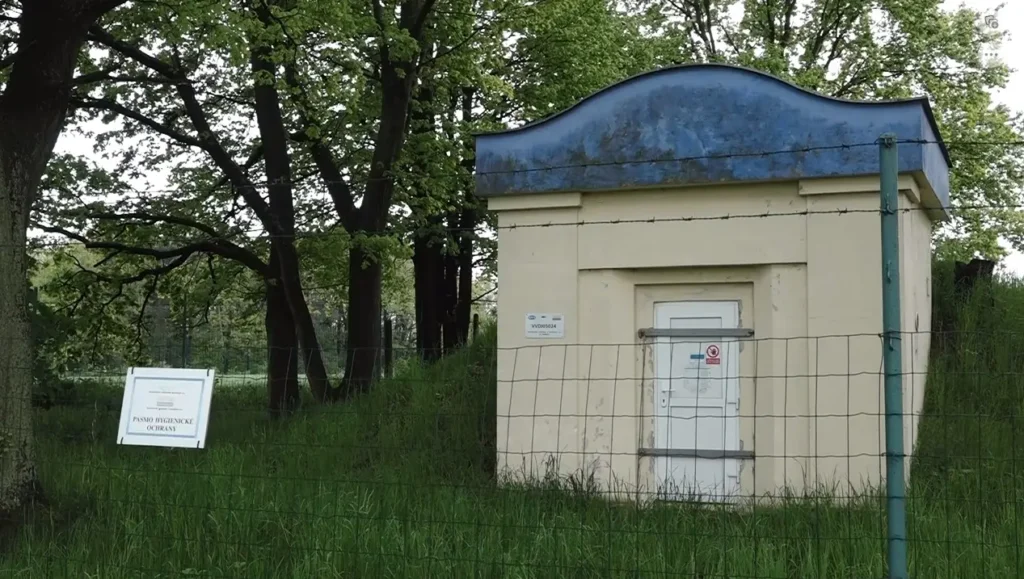
In 2017, Zdeněk Venera of the Czech Geological Survey stated, basing on 2015 data, that “more than twelve million cubic meters of water per year are pumped out of the mine. This can be compared to the consumption of a quarter of the population of Prague. Or with the water supply for more than three years for the population of Liberec.” In the past, the Polish side also tried for a long time to undermine this argument due to the inadequate monitoring network on the Czech side, the Liberec governor, told us. In the context of the increasingly severe drought in the Czech Republic, which is likely due to climate change, as well as changes in the Czech landscape over the past two centuries, this is another example of a huge waste of dwindling natural resources of fundamental importance to nature and humans.
The best possible solution or… pocket money?
Let’s now go back to February 2022. At that time, the Czech Republic had a new coalition government led by the right-wing ODS, which is the Poland’s ruling PiS party ally in the European Parliament. Still, some expected more from the new government on Turow, certainly more than from the government of Andrej Babiš. As Milan Starec of the Uhelná Neighborhood Association told us about the sudden signing:
“I couldn’t believe my eyes when I found out. We had the government of Andrej Babiš here for a while, during whose reign this issue began to be dealt with, and in fact the way Mr. Brabec, the previous environment minister, dealt with the issue was quite shocking to us. But the fact is that when there was some pressure from residents, he finally took the necessary steps. When the ODS government and the five coalition partners came in, we said “hurray” at first, believing that now someone would finally start working on it. And here one day Mr. Fiala announced that the agreement would be signed. He announced it to the government, as we found out in hindsight, and then told the media while Morawiecki was on the plane. Two hours later, the agreement was signed.”
Uhelná activists were probably neither the first nor the last to be unpleasantly surprised by the decisions of the current five-party coalition government, although it was not a big surprise. ODS politicians, such as MEP Jan Zahradil, had already suggested in the fall of 2021 that the new government’s approach would be different in the Turow case. “If ODS will bear governmental responsibility after the elections, we will reach a mutually acceptable agreement. We are members of the same European political family with the Polish ruling party PiS, we will do better than Babiš.” – he wrote on Twitter. Even in Poland, it was made clear that PiS was counting on a change of government in Prague.
The Fiala government inherited Babiš’s court case pending before the European Court of Justice. This fact strengthened Prague’s negotiating position, especially after the court ordered the closure (temporarily) of the Turow mine pending the verdict.
From the course of the court proceedings so far, one could also guess that the Czech argument about Poland’s flagrant violation of European law and breach of the principle of loyal cooperation in the Turow case would be accepted by the court. Other players in the Turow case on the Czech side also believe that the quick and surprising agreement had something to do with the ideological closeness of ODS and PiS: “The fact that the new government of Petr Fiala began to push for an agreement and the withdrawal of the lawsuit against Poland is quite strange, and we think that the reason is probably that the new Czech government simply wanted to end the dispute with Poland as quickly as possible, without regard to Czech interests or the interests of Czech citizens and the Czech environment, and the fact that ODS and PiS in Poland cooperate at the European level and have long declared good relations played a role in this. The agreement was actually signed by Mr. Fiala and Polish Prime Minister Morawiecki…,” according to Nikol Krejčová of the Czech branch of Greenpeace, adding that the way the agreement was secretly agreed and announced does not represent the standard process, which encourages speculation.
Speculation did not wait. The Polish side is said to have tried to take advantage of what the Czech media called an “ace up its sleeve.” In November 2021, the Polish side approached the Czech side regarding the Darkov and ČMS mines in the Karviná region. The letter from the Polish General Directorate for Environmental Protection said: “I take the liberty of stating that the possible continuation of the ČSM coal mine without conducting an appropriate transboundary environmental impact study with the Republic of Poland constitutes a violation of the obligations under Article 1(3) and (4) of the Espoo Convention and Article 7(1) of the EIA Directive.” The problem, however, was that the Darkov and CSM mines were undergoing recent overburden removal operations, while the mines were actually closed in February 2021. The Czech Ministry of the Environment responded to the Polish side in January 2022 that the removal of overburden at the closed mines no longer constituted a “significant negative change.” However, some speculated that the incriminated letter was intended to influence negotiations on the agreement. Environment Minister Anna Hubáčková (KDU-ČSL) dismissed this and pointed out that Poland was part of the process of evaluating the mining operations of the two Karviná mines, so procedurally everything was in order. Unlike Turow.
The EU Advocate General’s opinion of February 3, 2022, found a total of four points in the Czech complaint to be valid. Priit Pikämae found the remaining five allegations of the indictment to be without merit and rejected them. He suggested that the Court should grant the Czech Republic on the following points: Poland violated the European Directive by extending mining for six years without an environmental impact assessment. Poland violated the European Directive by failing to publish the content of the decision to extend mining operations and by transmitting the document to the Czech Republic five months late and incompletely. In addition, by failing to publish the content of the same decision, the Czech Republic violated another European directive by not allowing public access to environmental information. Finally, by failing to provide full information on the issuance of the permit, Poland violated the principle of loyal cooperation. It thus violated the Treaty on European Union.
The EU Advocate General therefore supported the Czech Republic on four key points of the complaint.
At this point, however, his position and Poland’s actual failings were much less important. On February 4, the Czech Republic informed the court that it “waives all claims arising from the mutual agreement reached with the Republic of Poland on the resolution of this dispute.” In fact, the Czech and Polish governments had agreed to an out-of-court settlement, or, as the agreement stated, “amicable with respect for European Union law.” The same law that Poland, according to the EU advocate general, violated on four points.
The agreement between the Government of the Czech Republic and the Government of the Republic of Poland on cooperation in countering the impacts of mining activities at the Turów open-pit lignite mine in the Republic of Poland on the territory of the Czech Republic follows in the footsteps of Czech demands that were unsuccessfully articulated by Foreign Minister Petříček in Poland in February 2021. Its subject is essentially two things: first, “dealing with the impact” of mining on the territory of the Czech Republic. Which specifically meant “cooperation between the parties in implementing and financing measures to identify, mitigate and prevent impacts, including their monitoring.” And then an amicable resolution of the dispute, i.e. withdrawal of the Czech lawsuit against Poland. In the agreement, Poland pledged to pay the Czech Republic a total of €45 million (instead of the original €50 million demanded by the Czech Republic) to “fully address the impact of mining at the Turów mine on Czech territory,” but in full compliance with the terms of the agreement. On the other hand, the Czech side pledged to use the funds in accordance with the agreement and to report to Poland once a year on their use.
Poland also promised “not to expand mining closer to the border with the Czech Republic and not to deepen the mine shaft by more than 30 meters below sea level” if it does not meet the terms of the agreement. These include: completion of the underground barrier and demonstration of its functionality, completion of the earthen embankment, meeting the requirements for monitoring mining on Polish territory and establishing monitoring wells. Failure to meet these conditions was supposed to be an obstacle to mine expansion, which at first glance looks like a compromise. However, the controversial “underground barrier,” as we mentioned, plays a major role in the agreement.
Poland promised to revise a previous decision to extend mining, which the Czech Republic challenged and which the EU Advocate General called a violation of EU directives, and also pledged to better inform and communicate with the Czech side on future decisions. We should add that in March 2023, Poland’s Ministry of Climate and Environment reauthorized mining at the Turow mine until 2044, in addition to the dispute with the Czech Republic (which involved 2026). Regarding the further impact of the mine, the Czech-Polish agreement concerns the construction of an earthen wall with trees, which should be one kilometer long and high enough to prevent the impact of mining on the Czech side of the border, i.e. in terms of noise, light pollution, air pollution and landscape. Monitoring of air and dust pollution should also be improved, as well as the mine’s exceeding of hygiene limits.
“I think this is a great success. We have managed to roll away the boulder that had been weighing down Polish-Czech relations for the past few years,” – Czech Prime Minister Petr Fiala said
after signing the agreement shortly after 1 p.m. on February 3, 2022. It is true that in terms of the development so far, the agreement marked a certain and not inconsiderable progress. Above all, the Polish side acknowledged that the Turow mine does indeed have some negative impacts on the territory and citizens of the neighboring country that need to be remedied, and promised to agree to some Czech conditions that it had so far rejected.
The Liberec region, which has been active on the Turow issue, also welcomed the agreement as an appropriate solution to the dispute. A year after the deal was concluded, Martin Půta sees the agreement as “the right step.” In his view, the agreement “is a compromise, but I am convinced that without it we would be in a much worse situation, because we would not have the right data, it would be difficult to access it, and it would not do us any good to strain Polish-Czech relations in the not-quite-straightforward situation we and all of Europe are in.” Interviewed by us, he stressed that the mechanism for monitoring the impact of the mines is one of the main advantages of the agreement compared to the past: “Perhaps, if I’m critical of the Czech state over seventy years, the paradox is that neither Czechoslovakia nor the Czech Republic has ever built any permanent measuring station near Uhelná and Václavice that could monitor whether any standards for dust, noise and other things are being exceeded.”
For some residents, however, the agreement was a disappointment, as they had fought for a more comprehensive solution. “The Czech side gave it up at a price…. that to me is the biggest disappointment from the politicians, that no one tried to compromise. No one even tried to negotiate that maybe mining could cover a smaller area, that it wouldn’t have to be so close to the Czech border, that maybe it wouldn’t have to last until 2044. Realistically, all that mattered during these negotiations was how much we would be paid. And even on this cynical principle, they were not able to achieve any success, because it turned out that even a billion was not enough.” – Milan Starec of the Uhelná Neighborhood Association says.
The deal is also viewed negatively by the Frank Bold Legal Foundation, which writes in a legal analysis that “the Czech government sacrificed a piece of Czech territory to allow Poland to continue mining in full. In return, it received money for emergency infrastructure – water supply – so that Czech citizens in the devastated area would at least have something to drink.” The analysis goes on to say that the agreement essentially legitimizes the environmental damage occurring, which is contrary to both countries’ commitments: “The Czech Republic, like Poland, has a legal obligation to take all measures to ensure that no further damage occurs on Czech territory at all. However, the agreement does not contain such measures.” While we were at it, we contacted a representative of the Frank Bold Foundation for further comment, unfortunately with no response.
Czech Prime Minister Fiala said that his government negotiated the agreement mainly with the interests of people on the Czech side who are negatively affected by mining. “This agreement undoubtedly brings tangible benefits to the localities affected by the Turow mine and their residents, which was our main goal,” – Fiala said after signing the agreement.
But more than a year later, in May 2023, Zuzana Pechová, a resident of Uhelná, told us: “The agreement was made for us, but taking it very personally, nothing has been done for us yet.”
She, too, sees the agreement reached as primarily beneficial to Poland and to the unrestricted continuation of lignite mining in Turow. Her colleague from the Neighborhood Association adds that it is not appropriate to speak of a compromise, since the Czech side demanded the cessation of mining and the Polish side demanded the continuation of mining and its extension for the maximum period of time, but she does not see it as a compromise that Poland can continue mining for the maximum period of time and will extend the mine. Liberec governor Martin Půta sees things differently and much more pragmatically. As he says, neither the region nor he himself has ever demanded a halt to mining, but he has demanded compensation for Czech citizens due to the effects of mining. It is clear from the above that both Czech politicians and local activists do not see opportunities for compromise solutions similarly.
The fact is, as we have already pointed out, that in November 2022 the Polish authorities authorized mining at Turów until 2044 on the basis of an EIA procedure. This decision is currently the subject of another lawsuit in Poland. In February 2023, the Polish Ministry of Climate and Environment again authorized the extension of mining until 2044. The Czech Republic originally sued Poland for allowing mining until 2026, settled the dispute, and then Poland extended mining until 2044, which also extended any negative impacts on the Czech side of the border.
Czech politicians have repeatedly spoken of the importance of Czech-Polish relations, which have been damaged by disputes over the Turow mine. The ODS is an ally of the PiS faction in the European Parliament, and the current Czech government agrees with the Polish one on anti-Russian policies and support for Ukraine, as confirmed by Petr Fiala’s visit to Poland this July. However, the Czech five-party government, led by ODS, sometimes has much more “conventional” views on European policy than the Polish one, even on an issue such as migration. In June 2023. Fiala criticized both Poland and Hungary for blocking money for Ukrainian refugees at the June summit because of their opposition to new EU migration policy rules, as they rejected an agreement that the Czech government supported.
From the perspective of the whole Turow affair, the question arises, doesn’t each side give a slightly different meaning to actions in mutual relations? According to the European Court of Justice’s expert opinion, Poland violated the principle of loyal cooperation in its relations with the Czech Republic and did not give way to the Czechs on any of the important parameters for the Czech side (such as the issue of expanding mining). For a long time, it even refused to agree to standard measures such as earthen bunds and noise and light pollution restrictions in the mine area, suggesting a certain asymmetry in relations. The Russian-Ukrainian war and its aftermath, however, have become a pretext for a narrative of “energy security” in both countries, in which coal naturally plays a new role and is making a comeback. In both Poland and the Czech Republic, it is a domestic energy source that reduces both countries’ dependence on imported sources.
On the anniversary of the signing of the agreement in February 2023, the Polish Climate Minister stressed its importance in the current geopolitical situation. Martin Půta, governor of Liberec region, gave a similarly sounding speech. The latest statistics show that the move away from coal has been halted across the EU due to the war in Ukraine. In the Czech Republic and Poland it means good news for local fossil fuel lobby. Although probably only for a short while…
(to be continued)

This report was developed with the support of Journalismfund.
Piotr Lewandowski, Iwona Lewandowska and Czesław Kulesza co-operated in the preparation of this report.
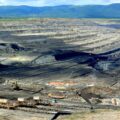
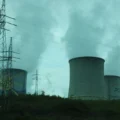
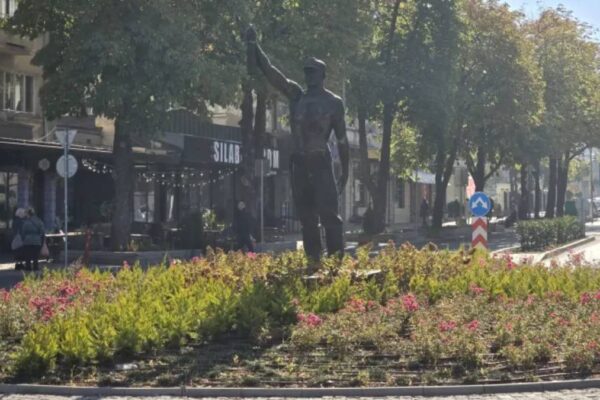

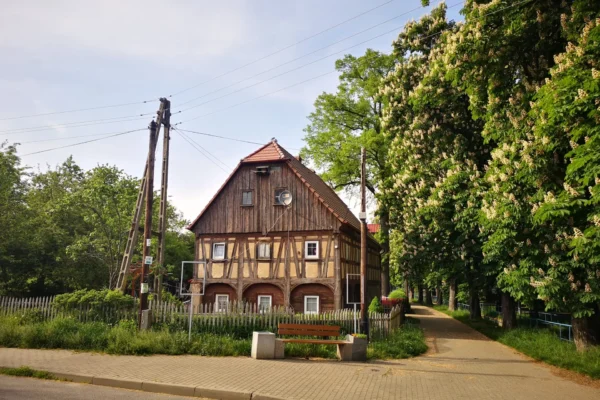

![Jiu Valley: is there a life after coal? [GALLERY]](https://www.foundintransition.eu/wp-content/uploads/2024/01/wieza-wyciagowa-i-chmury-scaled-1200x675-1-600x400.jpg)
![Jiu Valley: is there a life after coal? [GALLERY]](https://www.foundintransition.eu/wp-content/uploads/2024/01/wieza-wyciagowa-i-chmury-scaled-1200x675-1-120x120.jpg)
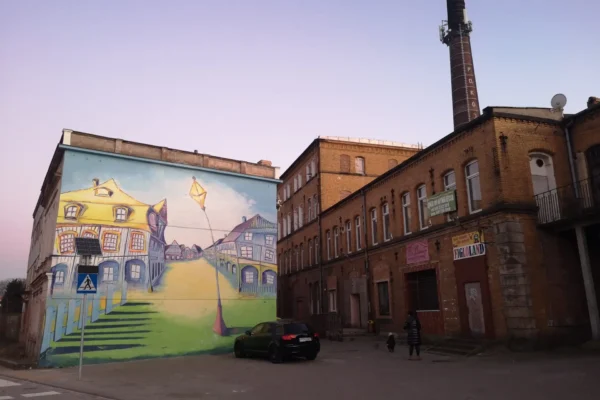

3 Comments
Lost Opportunity for a Just Transition: the Case of Turów Lignite Mine. PART THIRTEEN: Past Covered in Coal, Future Uncertain - Cross-border Talks
26 May 2024[…] for a Just Transition: the Case of Turów Lignite Mine. PART SEVEN: Arrogance and Lack of Empathy Lost Opportunity for a Just Transition: the Case of Turów Lignite Mine. PART EIGHT: Barriers and wa… Lost Opportunity for a Just Transition: the Case of Turów Lignite Mine. PART NINE: Czech […]
Lost Opportunity for a Just Transition: the Case of Turów Lignite Mine. PART TWELVE: Uncertainty - Cross-border Talks
3 August 2024[…] for a Just Transition: the Case of Turów Lignite Mine. PART SEVEN: Arrogance and Lack of Empathy Lost Opportunity for a Just Transition: the Case of Turów Lignite Mine. PART EIGHT: Barriers and wa… Lost Opportunity for a Just Transition: the Case of Turów Lignite Mine. PART NINE: Czech […]
Lost Opportunity for a Just Transition: the Case of Turów Lignite Mine. PART ELEVEN: There will be nothing without the mine - Cross-border Talks
3 August 2024[…] for a Just Transition: the Case of Turów Lignite Mine. PART SEVEN: Arrogance and Lack of Empathy Lost Opportunity for a Just Transition: the Case of Turów Lignite Mine. PART EIGHT: Barriers and wa… Lost Opportunity for a Just Transition: the Case of Turów Lignite Mine. PART NINE: Czech […]